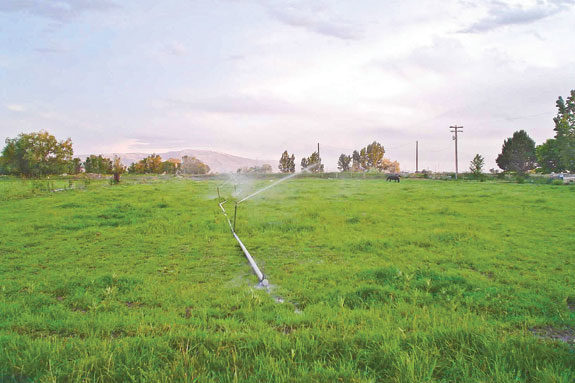“We should approach water the same way we approach fertilizer or any other crop input that carries a price tag,” says Chris Zinselmeier, program leader for water optimization with Syngenta Seeds Inc.
“We can’t control the rain, and sometimes we can’t even predict it, but that doesn’t mean we can’t manage soil moisture for maximum return on investment.”
Just how much does water cost? Under irrigation, growers can spend up to $10 per acre-inch on energy alone. Figuring the cost in dryland farming is tougher. For example, a deep tillage pass can remove one acre-inch of water through evaporation.
That might cost an irrigator an extra $10 per acre in pumping costs, but for the dryland farmer, it could cost much more in lost yield potential if the crop is stressed for moisture.
Too much water also has a price tag. Wet springs delay planting. Standing water promotes nitrogen loss, disease and stalk rot. Intense rain events wash away productive topsoil. How much is this costing farmers? A recent Iowa State University report pegs the price of soil erosion at $10 per acre for every ton lost.
When the problem is not enough water, a large share of the discussion has focused on genetics: breeding crops with specific genes to make plants more tolerant to drought.
Even as genetics generate waves of excitement, Kendall Lamkey, agronomy chair at Iowa State University, encourages growers to consider soil, weather and overall crop management as equal partners in the drive for higher yields.
“We’re not going to double-crop yields with genetics alone,” Lamkey says. In particular, he points to the growing need for soil management to stem erosion.
“Topics like soil erosion may not be as exciting as molecular plant breeding,” adds Lamkey, “but they figure largely in water management, crop yield and return on investment.”
Many established no-till farmers report that their fields drain better and support planting and harvesting equipment better than tilled fields in wet years. But no-till also conserves soil water for the crop in dry areas.
Growers can save one-half to three-quarter inches of soil moisture by eliminating one pass with a field cultivator, even more when they eliminate deep tillage.
No-till is the crown jewel: researchers at the University of Nebraska report saving three to five acre-inches of water when no-tilling under center pivot irrigation.
Similar water savings can come from early-season weed control. In ongoing corn studies conducted by Syngenta, researchers consistently see a three-to-one water advantage in plots treated with pre-emergence herbicides.
“For every inch of water removed in the weed-free plots, we see three inches of water removed in the weedy plots,” reports Bob Kacvinsky, Nebraska-based technical support representative with Syngenta.
In corn plots, two-inch weeds remove about two acre-inches of water. Two-inch to four-inch weeds remove almost four acre-inches of water.
“Depending on your irrigation system and your energy source, the cost of replacing water lost to weeds is about $7 to $10 per acre for every inch of weed growth,” says Kacvinsky. “The longer you delay herbicide application, the more it costs you in lost water.”
Pre-emergence herbicides also enable reduced-till and no-till systems by partially or completely replacing mechanical weed control.
Increasingly, the savings in tillage and time and the increase in yield are tipping the scales in favor of pre-emergence weed control, but it’s a prescription that can be difficult to follow when rain delays planting.
“Extremely wet springs can make it difficult to get a residual herbicide applied before planting,” says Mike Leetch, Syngenta technical support representative based in Iowa.
“We know that allowing the corn to germinate with weeds and pushing all of our weed management to post-emergence applications is not our best management practice, but sometimes it’s unavoidable.
If you’ve got to plant before you apply herbicides, we recommend adding residual weed control to your glyphosate. It will help to prevent yield loss due to weed competition, prevent late-season weed flushes, and provide additional management against glyphosate resistance.”
From not enough rain at the right time through too much rain at the wrong time, agriculture’s relationship with water is often one of extremes, notes Zinselmeier. It’s also a relationship that must be managed on many levels to maximize productivity and profitability. FG
—From Syngenta news press release
PHOTOWe should approach water the same way we approach fertilizer or any other crop input that carries a price tag and manage soil moisture for maximum return on investment. Photo by FG staff.











